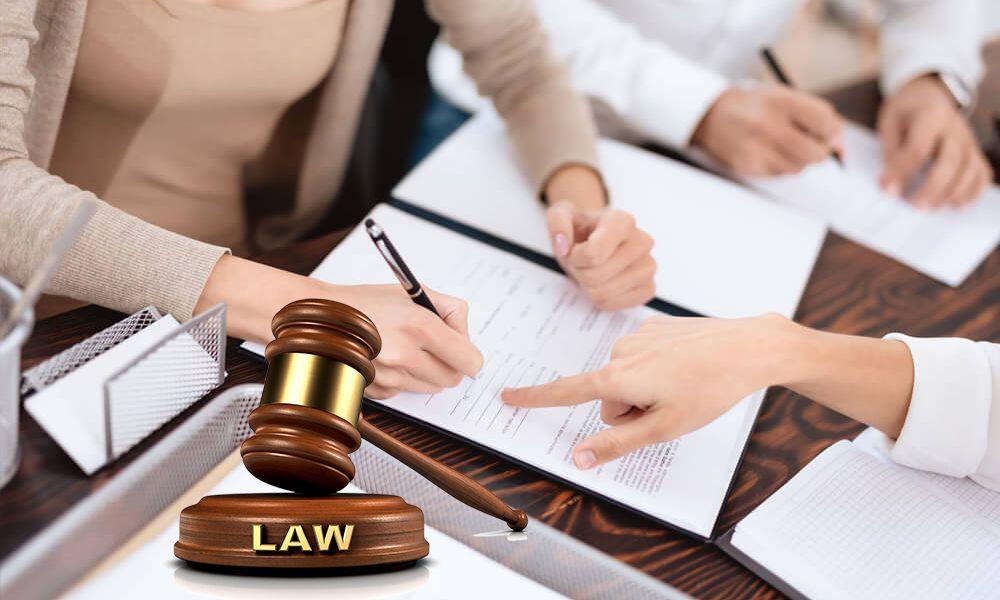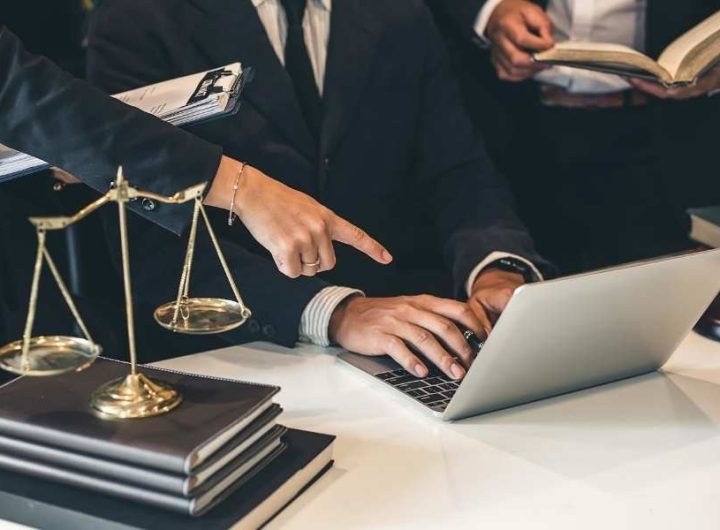
Top Cross Border Transaction Advisory Lawyer in Pune | Pentacles Legal
By 2025, most prospective civil litigation clients begin with a search, often after hours, on a phone, and with a very specific problem. For firms that want to Attract Civil Litigation Leads and truly Grow Law, SEO has become the most reliable, compounding channel. It’s not about stuffing keywords: it’s about answering complex questions credibly, showing up locally, and proving experience. Below are the trends and tactics civil litigators can use right now to win visibility, trust, and signed cases.
Civil litigation trends shaping online visibility in 2025
Google’s search results changed fast in 2024 and keep evolving in 2025. Civil litigation firms that adapt early hold the advantage.
- AI Overviews and zero-click results: Generative summaries mean fewer clicks for generic queries. Litigation firms need content that’s specific, source-backed, and worthy of a click, think state-by-state comparisons, timelines, checklists, and nuanced “what if” scenarios.
- E‑E‑A‑T signals matter more: Experience, Expertise, Authoritativeness, and Trust remain pivotal. Attorney bylines, detailed bios, bar credentials, speaking credits, and citations to statutes or rules (with plain-English explanations) help pages surface.
- Topical authority beats isolated pages: Clusters around causes of action (e.g., breach of contract), procedures (discovery, motions, appeals), and industries (construction, healthcare) signal depth.
- SERP features are table stakes: FAQ snippets, Pros & Cons, and “People Also Ask” coverage can pull visibility even when ranking below Position 1.
- Performance and accessibility: Core Web Vitals and mobile UX still influence rankings and conversions. Clients won’t wait on a slow motions explainer while juggling a deadline.
Taken together, 2025 favors firms that publish authoritative, experience-rich content and structure it so both people and search engines can immediately see its value.
Optimizing keyword strategies for complex legal searches
Civil matters don’t start with a simple “civil litigation lawyer” query. Prospects search the problem in front of them. Effective keyword strategy mirrors that.
Map intent first:
- Hire intent: “business litigation attorney near me,” “breach of contract lawyer ,” “civil defense attorney consultation.”
- Research intent: “what happens after a motion to dismiss,” “summary judgment vs. trial,” “how long does discovery take in .”
- Cost/risks: “cost to file a civil lawsuit,” “attorney fees for contract dispute,” “sanctions for discovery violations.”
Build semantic clusters rather than stand‑alone pages:
- Pillar page: “Civil Litigation in : Process, Costs, and Timelines.”
- Cluster pages: breach of contract, tortious interference, fraud, trade secrets, construction disputes, injunctions, appeals. Tie in procedure pages (service of process, depositions, mediation, motions).
Use long‑tail, jurisdictional, and role‑specific variants:
- Plaintiff vs. defense pages (separate pain points and CTAs).
- Industry modifiers: “construction defect litigation attorney .”
- Procedural phrases clients actually type: “compel discovery ,” “protective order deposition,” “spoliation sanctions.”
Execution details that move the needle:
- Title formulas that match intent: “Breach of Contract Lawyer in Austin | Strategy, Costs, Next Steps.”
- On‑page FAQs that mirror People Also Ask.
- Internal links that guide a journey from research to consultation.
- Continuous refinement using Search Console (regex filters for queries containing “near me,” “cost,” “timeline,” “vs”).
Done well, this approach helps Attract Civil Litigation Leads that are both qualified and ready to talk.
Building authority through consistent content publishing
Authority compounds with consistency. In civil litigation, that means showing up with useful, experience‑driven answers every single month.
What to publish:
- Practical explainers: discovery obligations, expert disclosures, summary judgment standards by jurisdiction, injunction factors.
- Timely commentary: short analyses of new state appellate opinions affecting contracts, trade secrets, or class certification.
- Decision tools: “Should you seek a TRO? A 5‑question checklist.”
- Case studies (sanitized and ethics‑compliant): strategy chosen, procedural posture, and outcome, focused on lessons learned.
How to present it:
- Clear hierarchy, short paragraphs, and scannable subheads.
- Plain‑language summaries before legal nuance.
- Citations tucked neatly with hover or footnotes, not front‑loaded jargon.
- Authorship that highlights the litigator’s experience (trial days, sectors served, representative results).
Cadence and promotion:
- A predictable calendar (e.g., 2 articles + 1 update per month) beats sporadic bursts.
- Repurpose into newsletters, LinkedIn posts, and CLE decks to earn authoritative links.
This steady drumbeat signals topical authority to search engines and real credibility to prospects, precisely the blend required to Grow Law sustainably.
Local SEO insights for attracting litigation clients
Most civil matters are local or regional. Showing up where disputes happen is non‑negotiable.
Google Business Profile (GBP):
- Primary category: choose carefully (e.g., “Law Firm,” “Trial Attorney,” or specific where appropriate). Add granular services: breach of contract, partnership disputes, injunctions.
- Build trust signals: photos of attorneys and office, office hours, appointment link, messaging enabled, and real attorney bios linked from GBP.
- Q&A: seed and answer common questions (consultation length, conflict checks, document prep).
- Reviews: ethically request detailed, experience‑focused reviews: respond to each. Avoid incentives: respect confidentiality.
On‑site local signals:
- City and county service pages with localized procedures (e.g., local rules, court venues, filing fees).
- Attorney schema and LocalBusiness markup: embed a map and driving info.
- Local citations on bar associations, chambers of commerce, and reputable legal directories (Avvo, Justia, Martindale).
Neighborhood relevance matters in 2025. Firms that weave local procedure, court context, and community involvement into their pages are far more likely to Attract Civil Litigation Leads near their offices.
Enhancing credibility with case-specific resources
When a prospect is weighing counsel, “generic litigation page” rarely wins. Case‑specific resources do.
Create assets prospects can actually use:
- Pre‑consult checklists (what to bring, emails to preserve, contract versions, board minutes).
- Timelines and flowcharts for common paths (demand → filing → discovery → mediation → trial → appeal).
- Jurisdictional calculators and references (limitations periods by claim, rules on expedited discovery).
- Downloadable templates (litigation hold notice) with clear disclaimers.
Design for conversion:
- Pair every resource with a relevant CTA: “Talk through a discovery plan,” “Review arbitration clauses before filing.”
- Place contact forms beside high‑intent sections and enable click‑to‑call.
- Use slim gating judiciously (email for deep guides) and always deliver immediate value on the page.
These focused resources increase time on site, earn links, and, most importantly, make it easy to Attract Civil Litigation Leads who recognize the firm’s depth before the first call.
Integrating video and multimedia for stronger client trust
In litigation, tone and clarity matter as much as text. Video accelerates trust when used thoughtfully.
What to film:
- 2–4 minute explainers on depositions, TROs, and summary judgment strategy, in plain English.
- First‑meeting expectations: conflicts checks, fees, documents, timelines.
- Case study spotlights (with consent), focusing on approach rather than names.
How to deploy:
- Host on YouTube with VideoObject schema: embed near related copy.
- Add captions, chapters, and a short summary for skimmers and accessibility.
- Create 30–60 second vertical clips for LinkedIn and Shorts to drive awareness.
Subtle production quality, a clean backdrop, good audio, tight scripting, goes a long way. When prospects can see and hear the litigator explain strategy calmly, they’re more inclined to engage and, eventually, to Grow Law with the right matters.


 Uncovering the Realms of Property Division During a Divorce Case
Uncovering the Realms of Property Division During a Divorce Case  Estate Planning After Divorce: Protecting Your Financial Future in Boston
Estate Planning After Divorce: Protecting Your Financial Future in Boston  The Role of Evidence in Winning a Car Accident Claim in Atlanta
The Role of Evidence in Winning a Car Accident Claim in Atlanta  Exploring the EB-5 Investor Visa Program and Immigration Pathways in 2025
Exploring the EB-5 Investor Visa Program and Immigration Pathways in 2025  Workers’ Compensation Rights and Employee Protections in Washington State
Workers’ Compensation Rights and Employee Protections in Washington State  Smart Strategies a Harlem Personal Injury Lawyer Uses to Maximize Car Accident Settlements
Smart Strategies a Harlem Personal Injury Lawyer Uses to Maximize Car Accident Settlements